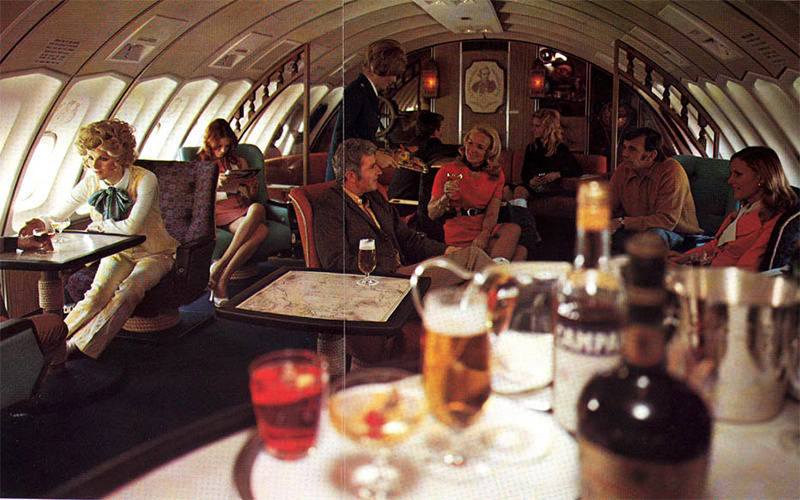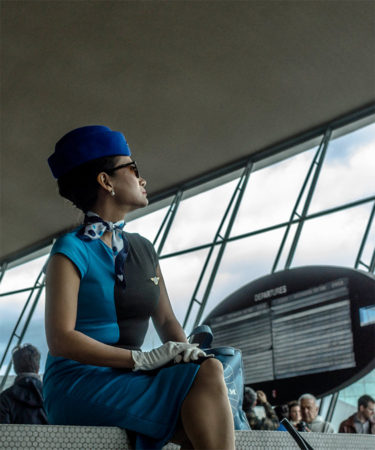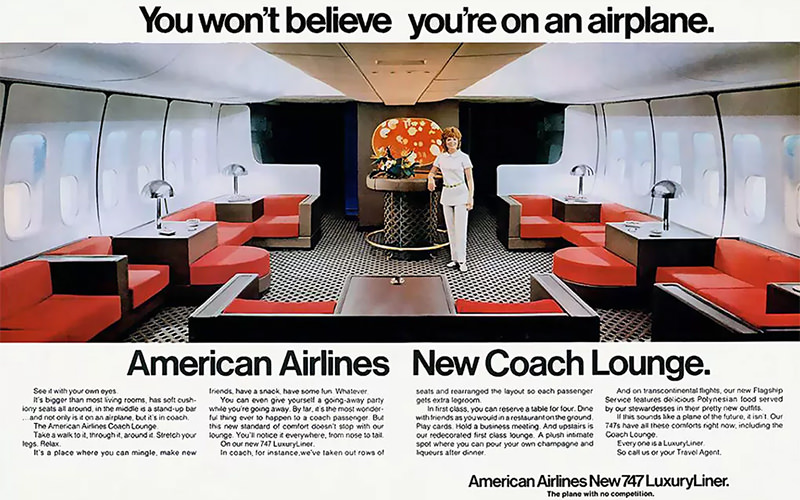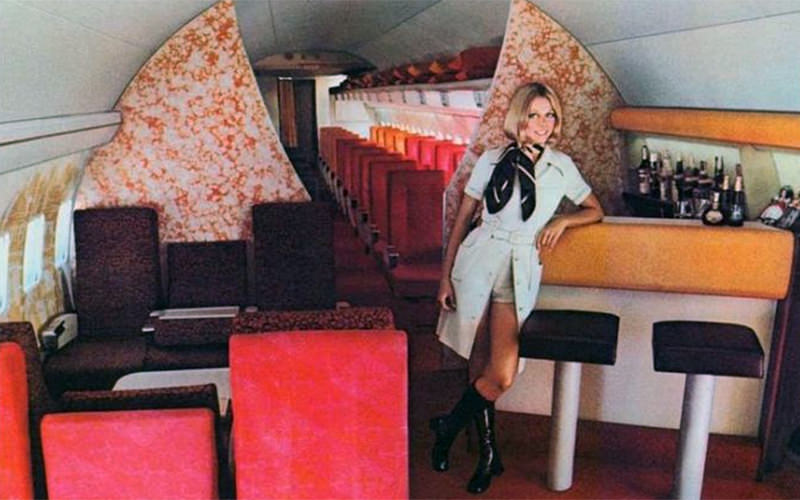If you’ve ever seen a photo gallery of “what flying was like back in the 1950s/60s/70s” your initial reaction is either awe (if you weren’t jetting around the country back then) or incredulity, since you were jetting around the country back then and know that most of those photos have little relation to reality. Flying back in the era before the Airline Deregulation Act of 1978 — in coach — wasn’t a whole lot different than today. Sure, the seats were a bit wider, you had some more leg room, meals were gratis, but then again the air in the cabin was a toxic stew of cigarette smoke. Flying in first class – even domestically – was a different matter.
Today domestic first class means free drinks, free (perhaps edible) food, and a seat that might not leave you with a chronic back condition. While deregulation played a large role in driving down quality and prices, this ‘golden age’ of luxe airborne lounging was largely brought to an end by the Arab embargo induced oil crises of the 1970s. In an ironic twist, if you’re looking to have a drink in a 1970s style airborne lounge today, the Middle Eastern carriers Etihad and Emirates are your best options. Maybe you can even join Jennifer Aniston at the bar on one of Emirates’ A380s…after a quick rinse in the shower. For the 99.9% of other flyers we can only dream.
Back in the early 1970s it wasn’t just absolutely over-the-top Middle Eastern carriers who offered this sort of lounge experience (with all the smoke in the air, showers no doubt would have been appreciated). When the first Boeing 747 took to the skies in 1970, its iconic upper deck presented airlines with an interesting conundrum: initially the space wasn’t certified by the FAA to carry passengers during takeoff and landing. While certification came quickly enough, in this era, competing for passengers meant providing unique amenities. Therefore many airlines decided to convert the space into lounges, typically, but not always for premium fare passengers. Here are some of the most glamorous flying lounges of the 1970s:
The Pan Am 747 Restaurant
Pan Am was the first airline to fly a 747 commercially, on January 22, 1970, and that flight set the upper deck standard for years to come. Instead of hunching over meals on plastic trays, passengers on Pan Am’s original 747s could share a meal at a table with three friends.
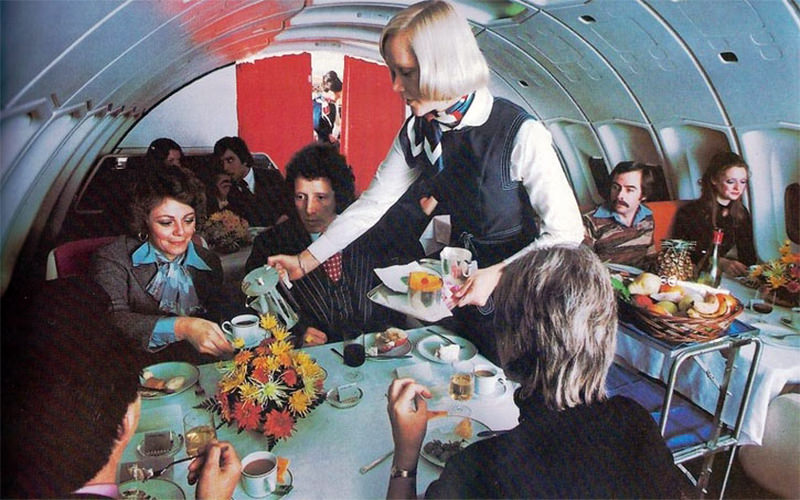
The American Airlines 747 “LuxeryLiner” Featuring A Piano Bar!
American Airlines was one carrier who took a democratic approach to their offering, which is perhaps the most incredible of all. While the height of luxury today is being able to take a shower on Emirates, everyone on American’s original fleet of 747s (plus some 707s and DC-10s) could grab a drink and some live music in the piano bar. Given the realities of turbulence, American opted for Wurlitzer electric organs. Interestingly the piano bars weren’t confined to the upper deck; instead they were housed in the back of the main deck, behind the coach seats.
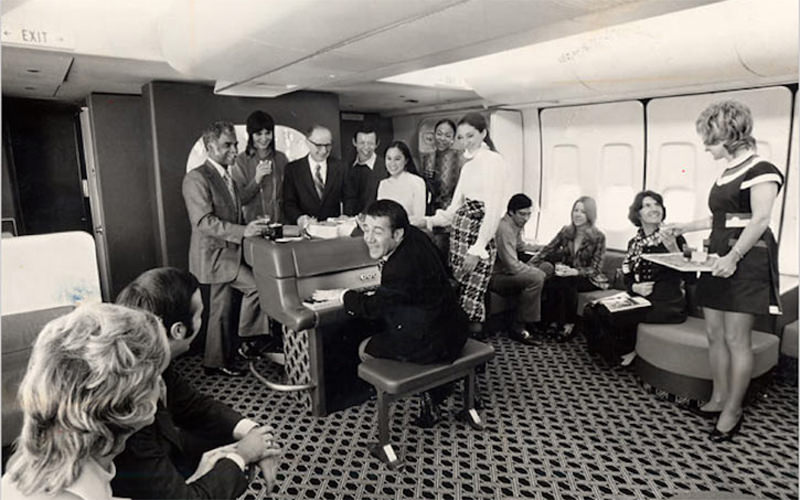
And how about a video?
The Braniff 747 Upper Deck
Braniff was a U.S. airline that tried to go big following deregulation. Their plans worked for a while, but ultimately led to bankruptcy. Before that happened, flyers of the 1970s could stretch out in the lounge on the airline’s sole 747, which plied a route between Dallas and Hawaii.
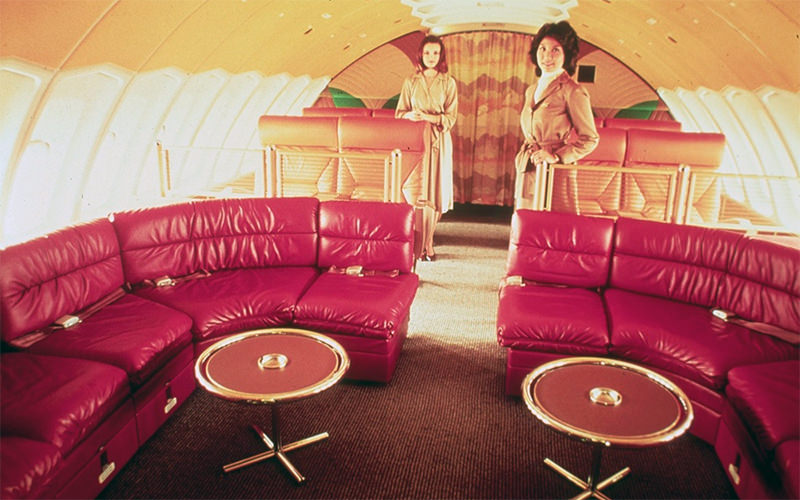
The Continental 747 & DC-10 Polynesian Pubs
While most of the lounges of the era were confined to the upper decks of 747s, Continental was another airline that took a democratic approach, installing “Polynesian Pubs” in the economy class section of their DC-10s and 747s.
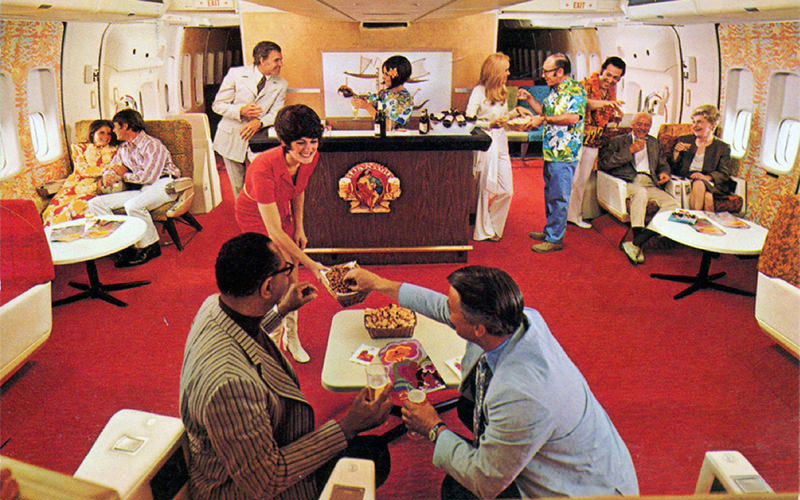
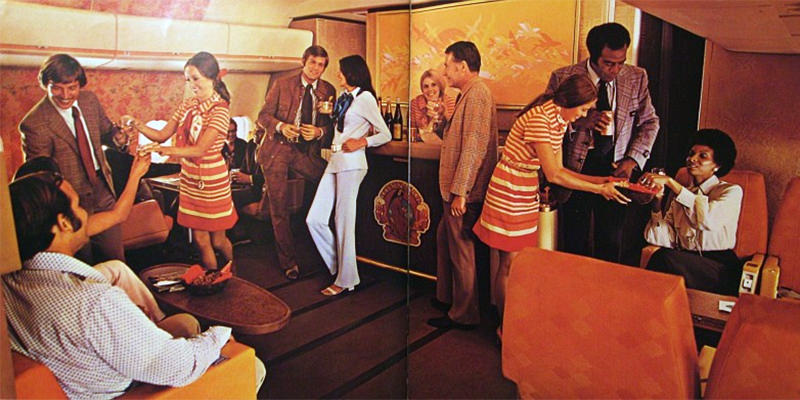
The TWA 707 Coach Lounge
TWA was another airline that sought to bring the simple pleasures of the cocktail lounge to coach class passengers, even on smaller planes, like the 707. At the front of the coach cabin you could find a small lounge featuring a bar and a communal table.
The Qantas 747 Captain Cook Lounge
American-based carriers weren’t the only ones who decided to turn their 747s’ upper decks into lounges. Qantas, due to its remote Australian base, flies some of the world’s longest flights; reflecting that they took the lounge concept up a notch. Champagne, cocktails and good company (and cigarettes…lots of cigarettes) might have been the standard on U.S.-based carriers; Qantas’ Captain Cook Lounge was a full-on restaurant.
